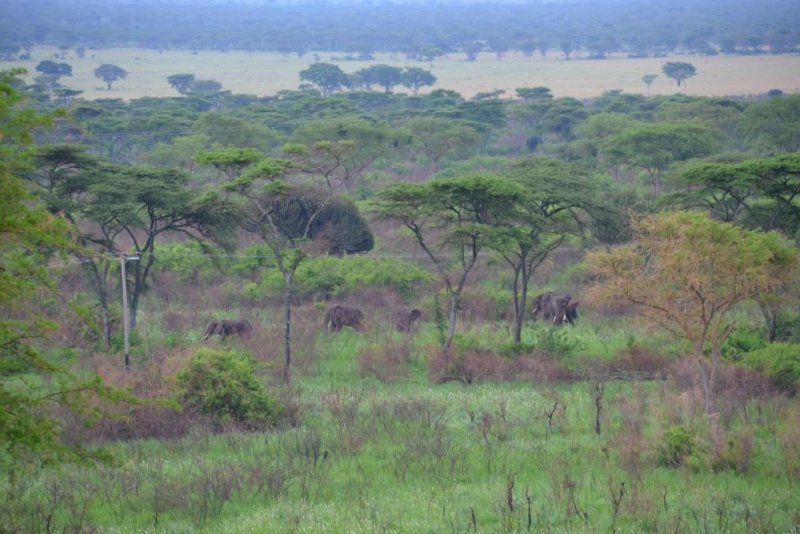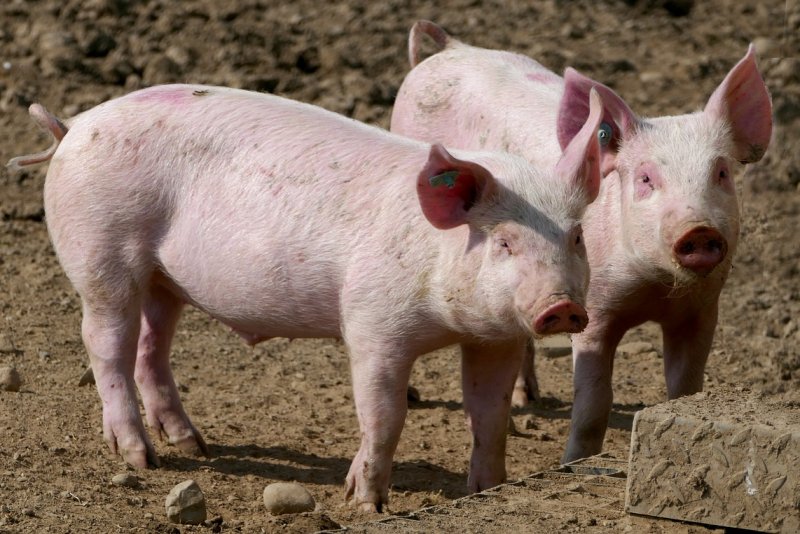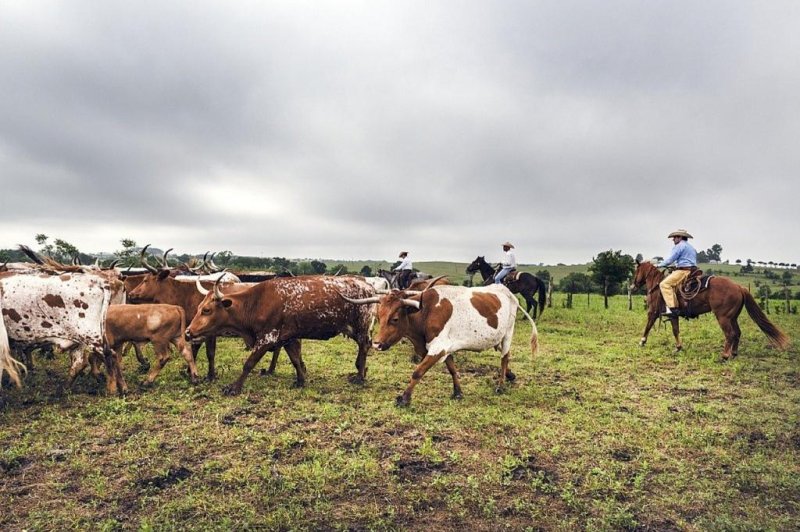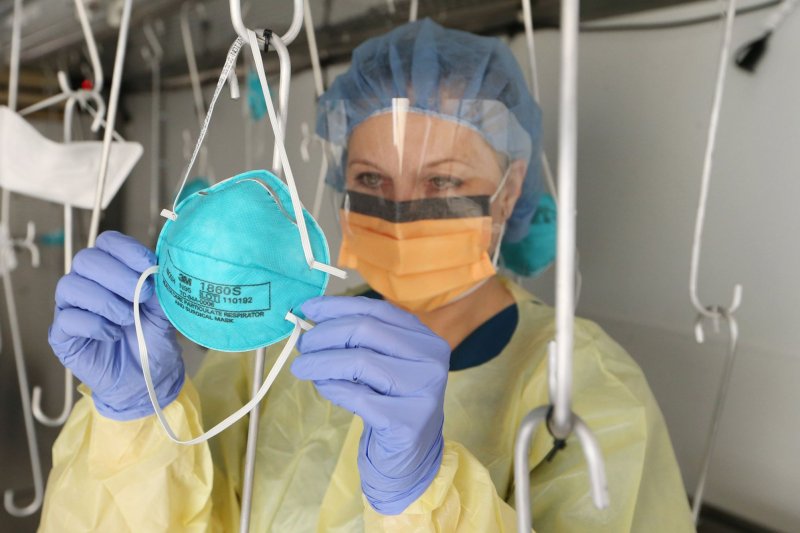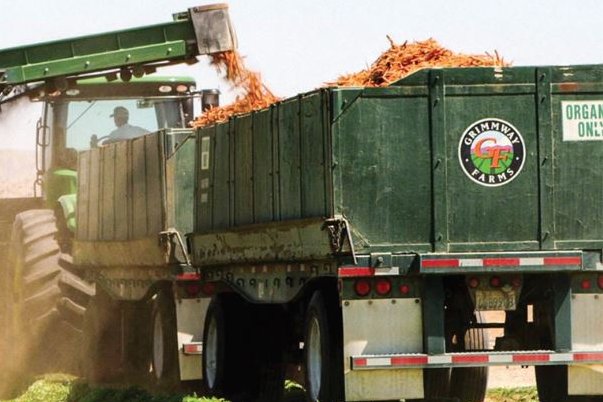May 2020
Thirty years since the collapse of the Soviet bloc
In the name of the communist ideal
One of the received ideas that became a ‘truth’ after the fall of the Berlin Wall was that the Soviet bloc’s populations cursed communism, yet obeyed it slavishly. In fact, many social movements within the Eastern bloc had long aspired to genuine socialism.
by Catherine Samary

cc. Carlos Reusser Monsalvez
The collapse of the Soviet bloc in 1989-1991 is still portrayed as a collection of simplistic clichés (1). British political analyst Timothy Garton Ash says that ‘in 1989 Europeans proposed a new model of non-violent, velvet revolution’ (2), a reverse image of that of the storming of the Winter Palace in October 1917. Nothing incarnated this model better than Czechoslovakia and Václav Havel, the long imprisoned, dissident playwright who became president in 1989. This interpretation gives liberal ideology and its representatives a preponderant weight in the West’s victory at the end of the cold war.
Havel himself didn’t believe this. In 1989, he said, ‘Dissidence was not ready... We only had a minimal influence on the events themselves.’ To designate the decisive factor, he looked a little further east: ‘The Soviet Union could no longer intervene, without opening an international crisis and completely putting an end to the new policy of perestroika [reconstruction]’ (3).
Some years earlier, Garton Ash had used the neologism ‘refolution’ (from reform and revolution) (4), to reflect the combined traits of 1989-1991: a challenge to the political and socioeconomic structure of the existing system in a capitalist sense (revolutionary or counter-revolutionary, according to perspectives), but through reforms imposed from above. Charter 77 — the intellectual opposition front to which Havel belonged — showed remarkable resistance to the ‘normalisation’ of Czechoslovakia under occupation, but expressed no consensus on socioeconomic issues nor did it have the support of any organised social base.
Mass democratic mobilisations have, in fact, existed at the heart of these regimes: workers’ riots in June 1953 in Berlin, workers’ councils in Poland and Hungary in 1956, the Prague Spring of 1968 (prolonged by the birth of the Czech workers’ councils), the revolutionary trade unionism of Solidarność (Solidarity) in Gdansk, Poland, in 1980. It is this history that the liberal interpretation of 1989 obliterates or falsifies — and tries to appropriate by presenting it as anti-communist. These popular movements fought, not to re-establish capitalism, but on the contrary in the name of socialist ideals.
If the end of the single party was popular; the philosopher Slavoj Žižek recalled that ‘Behind the Wall the peoples did not dream of capitalism’ (Le Monde, 7 November 2009). Capitalism’s triumph did not arise from a mass desire, but a choice made by the communist nomenklatura: to transform its privileges of function into privileges of ownership. Although the elites’ ‘grand conversion’ has been analysed (5), there are few studies on the social base of the old single party, which, though it became restive, did not demand privatisations.
Workers’ councils in Poland and Hungary
‘We can ask why it is the Polish working class which, out of all the countries in eastern Europe, periodically resumes the class struggle, and why now’, Polish journalist and former communist militant Victor Fay suggested in 1980 (6). Each of the great Polish independence struggles was marked by powerful workers’ mobilisations that, after the second world war, extended into a subtle relationship with the Communist Party of Poland (Polish United Workers’ Party, POUP), and also with the changing policy of the Kremlin in relation to eastern European communist parties.
The rupture in 1948 between Tito (Josip Broz) of Yugoslavia and Joseph Stalin showed the conflict between aspiration to the sovereignty of a national communism and the hegemonic policy of the Kremlin. It was accompanied by ‘anti-Tito’ purges in Poland, Bulgaria, Hungary and Czechoslovakia. After Stalin’s death, public apologies by his successor Nikita Khrushchev to the Yugoslav communists and the denunciation of Stalin’s crimes during the 20th Congress of the Communist Party of the Soviet Union in February 1956 revived the hope that Moscow would respect the egalitarian relationships, national and social, which in theory structured the Soviet universe.
Until the 1980s, all the great democratic uprisings sought, explicitly or in practice, to reduce the gap between the reality of bureaucratic oppression and socialist principles. Thus, the emergence of workers’ councils in Poland and Hungary in 1956 went along with the demand for the Stalinist leaders’ marginalisation, and was supported by significant sections of each of the parties. Discovering the limits of de-Stalinisation in the USSR, Tito’s Yugoslavia decided in 1956 to encourage the non-aligned movement, while affirming self-management (in contrast to centralised planning) as the ‘Yugoslav road to socialism’.
In Poland, Moscow was concerned by the triumphal return of Władysław Gomulka to the head of the POUP in October 1956 (from which he had been excluded in 1948), the decollectivisation of land and the favours accorded to the Church. However, Gomulka’s profession of communist faith and his promise to respect the ‘Soviet big brother’ pushed the Kremlin to concentrate rather on bringing Hungary to heel. Though Poland escaped Soviet intervention, its workers’ councils were contained, even if self-management rights were conceded in the universities: the threat to challenge these later led to the 1968 student explosion.
During the 1960s, workers’ strikes against planned price increases expressed the strength of an attachment to the ‘egalitarianism’ and ‘stability of employment’ that underlay what economist Michael Lebowitz analyses as a kind of (alienated) ‘social contract’ by which the single party sought to stabilise its reign, in the name of the workers and on their backs. (7). Socialist legality, which made producers the proprietors of the means of production, was expressed recurrently in the emergence of workers’ councils in workplaces, while the privileges of the communist nomenklatura were simultaneously denounced. The leaders were never perceived as legitimate proprietors. It was the restoration of capitalism after 1989 which would establish their true powers of ownership, that of selling off the factories and introducing the masses to capitalist unemployment.
Social and ownership rights
Meanwhile, the party-state had power to manage enterprises, which it used to stabilise its regime, as an alternative to simple repression. Official trade unionism concentrated its action on the distribution of a social income (non-monetary and associated with employment in the big conglomerates) in the form of access to housing, health services, vacation centres or stores. In the Soviet Union’s last decade, more than 60% of workers’ incomes originated from these collective funds in kind (8). Under this system, all economic choices and mechanisms (including prices) were perceived, correctly, as political. Hence the rapidly subversive dynamic of strikes, which switched almost spontaneously from economic issues, to the demand for social and ownership rights to be recognised as legitimate.
Indeed, in the 1960s, reforms of centralised planning would attempt to reduce waste and improve the quality of goods produced, but without substantially increasing workers’ rights. It was about introducing autonomy of enterprise management and encouraging directors to compress costs, which threatened the social contract. These attempts were blocked by strikes (in Poland) or would lead, as a consequence of social movements, to an enlargement of the liberties and rights of workers in the enterprises, as in 1968 in Czechoslovakia. In Yugoslavia, ‘market socialism’ came to a halt in the early 1970s after an upsurge of strikes and political struggles (Belgrade’s ‘June 68’) against inequality and the ‘red bourgeoisie’. The violent repression of the Polish strikes in 1970 led to Gomulka’s fall and his replacement by former miner Edward Gierek, president from 1970-80.
In Poland, Yugoslavia, Hungary, Rumania and the German Democratic Republic (RDA), the blocking of market reforms went in the 1970s with an opening to western imports, to respond to consumer demand and improve the efficacy of production through transfers of technology. The hard currency debt crisis which affected all these countries (9) was reflected in Poland by a new attempt at price reform, which led to an escalation of strikes, confrontations and negotiations, laying the bases for workers’ self-organisation on a nationwide scale in 1980-1981.
During the battle for the legalisation of Solidarność, there was a rise in power inside the independent trade union of a strong self-managed current (10). With more than ten million members, of which two million were Communist Party members, the independent union won the right to legally hold its congress in August 1981. A counter-power and a social project anchored in socialism and the self-managed control of economic choices was being developed (11). What then happened between 1981 and 1989 so that neoliberal ‘shock therapy’ could be administered without much resistance after the fall of the Wall?
The two Solidarnośćs
ThePolish Marxist intellectual Karol Modzelewski, who was deeply involved in the struggles of Solidarność for which he was an adviser and spokesperson, witnessed to a conception of democracy that, contrary to that of Havel, does not stop at the doors of the workplace. In Nous avons fait galoper l’histoire. Confessions d’un cavalier usé (12), he concludes, like Havel, that the course taken in 1989 in Poland and in all the countries of Eastern Europe was determined by the situation in the USSR. But for him, this meant that Polish workers no longer weighed on the political dynamic. The cause of this was the introduction of martial law by General Wojciech Jaruzelski in December 1981. Modzelewski estimates that 80% of its members then left the union (forced underground), which led to a profound demoralisation and the demobilisation of a whole workers’ generation.
He distinguishes two Solidarnośćs. One was the ‘big’ union, solidaristic and fraternal, ‘the child of socialism’, capable of ‘making history gallop’. The second emerged transformed by its passage underground: it ‘was no longer a mass workers’ movement, but a relatively narrow anti-Communist conspiracy’. From then on, the return to legality around the Round Table of 1989 (13) produced a ‘clash of values’: everything separated the ‘collectivist and solidaristic’ aspiration of the original workers’ union and the type of ‘liberty without equality and without fraternity — hence precarious’ advocated by the new Solidarność, acclaimed by the pro-western liberal intelligentsia.
For the new and old ‘élites’ of 1989, ‘the West was like Mecca’, says Modzelewski, who perceived at this moment a divorce between intellectuals and workers. Certainly, at the time of the electoral triumph of 1989, ‘nearly everyone felt the taste of victory’. But ‘afterwards, they began to lose — lose on their wages, lose their work, lose the implantation in the community of the liquidated factories, lose the certainty of tomorrow and lose their social dignity.’ The ’self-managed Polish republic’ inscribed in the programme of Solidarność was in contradiction with capitalist restoration. But would it have resisted a Soviet military intervention?
A review of the Czechoslovak experience of 1968 reveals instead some arguments in favour of an open history. The traditional analysis of the Prague revolt, says Karel Kovanda (14), who was involved in it as a student, opposes the forces of the conservative bureaucracy — around the secretary of the Czechoslovak Communist Party, Antonín Novotný — to those of the liberal reformers incarnated by his successor, Alexander Dubček, all this in a context of restructuring of the planned economy. But this superficial cleavage hides another, at least equally structuring, inside the progressives, according to Kovanda. He distinguishes on the one hand ‘technocrats in the economic area, liberal in politics’ who ‘demanded very controlled reforms... conducted from above’. They were found ‘inside and outside the Czechoslovak Communist Party’, as were the members of the second component, what he calls the ‘radical democrats’. For the latter, ‘a mass popular participation was an essential condition to undertake a change of system going beyond the cosmetic’ — which raised the question of the mobilisation of the workers.
‘Socialism with a human face’
It was to boost the popularity of the reforms that Dubcek advanced the idea of a ‘socialism with a human face’ from which the movements from below would emerge immediately. According to Kovanda, the Central Council of Trade Unions (URO), one of the more conservative bodies in the country, received in the first weeks of 1968 around 1,600 resolutions from local sections concerning the question of rights lost by the workers, including in the function of the official union itself. The trade union newspaper Práce launched a crusade ‘demanding more extensive powers for the workers’, while, in April 1968, the influential weekly Reportér published a column calling for a self-managed workers’ movement.
Concrete proposals of statutes were drawn up, in particular in the factories of ČKD, the biggest industrial complex in Prague, and those of Škoda, in Plzeň. In April 1968, the Communist Party central committee had to integrate into its programme the question of workers’ councils. In a study published that year in the review of the CP’s central committee, Nová Mysl (‘new spirit’), focusing on 95 councils, the sociologist Milos Barta stresses ‘the rapidity with which, after the development of the process of democratisation in society, the idea of founding preparatory committees for workers’ councils took root and spread’ (15). On the eve of the entry of Soviet troops into Czechoslovak territory, on 21 August 1968, ‘nearly 350 workers collectivities assumed that a workers’ council would be at their head as of January 1, 1969’.
Before this surge of self-management, the project of a reform under technocratic guidance was vanishing. Positions were taken not between conservatism and reform, but between radical democracy and a return to the bureaucratic grip. The invasion only accelerated this trend. The ČKD factory hosted, in the district of Vysočany, the clandestine Communist Party congress, which denounced the intervention and elected a new Central Committee, not recognised by Dubcek, himself implicated with other leaders in a spirit of compromise with the Kremlin. In this context, Kovanda stresses, ‘the Prague Spring could only continue through the autumn to the extent that massive popular investment continued’, with the ‘transformation of the factories into bastions of economic democracy — via the councils ‘as principal priority’.
In September 1968, there were 19 councils; from 1 October, 143 others began to function. At the end of October, while the tanks of the Warsaw Pact (16) patrolled the streets, the government, still led by Dubcek, declared, without having been ordered to do so by the Soviets, that it was ‘not appropriate to pursue this experience’. This outcome led to a wave of union protests which were taken up by the press. In January 1969 — after several months of occupation —, ‘the councils represented more than 800,000 persons, a sixth of the labour force’ (outside of agriculture), Kovanda recalls. Others were still forming in spring 1969. In late June, ‘the existence of 300 councils and 150 preparatory committees was reported, with a prestige associated with the biggest enterprises in the country. A little more than half were CP members.
For a ‘radical democracy’
But the crackdown had begun. From January 1969, the praesidium of the party had denounced the worker and student strikes. The student Jan Palach set fire to himself on 16 January. On 17 April, Dubček was removed from his post. During the summer of 1970, the workers’ councils, initially smothered de facto, were banned. The ‘normalisation’ was complete.
For Jaroslav Šabata, a member of the self-management current of the CP, elected to the central committee during the clandestine congress of August 1968, the Czechoslovak communists ‘should be proud of the Vysočany congress, which rejected the invasion of the Warsaw pact’; but they should be less proud of having ‘themselves contributed to the dispersal’ of the sovereign and self-managed ‘radical democracy’, which this congress supported. On the other hand, its consolidation ‘would have immensely encouraged all the reformist forces of the Soviet bloc and of the USSR also”’ (17).
Šabata explains that he signed Charter 77 because a ‘radical democracy’ was needed inside the Communist movement also. However, the social dimension of such a democracy — subjecting the economy to collective choices made in a context of egalitarian social relations — was far from being consensual inside of Charter 77. And is completely incompatible with the treatment of the workers in the ‘actually existing capitalism’ and ‘European construction’ which emerged after 1989.
Catherine Samary is an economist and the author of Communism, Democracy & The Commons (co-ed), Merlin Press & Resistance Books, 2019.
Translated by Bernard Gibbons

